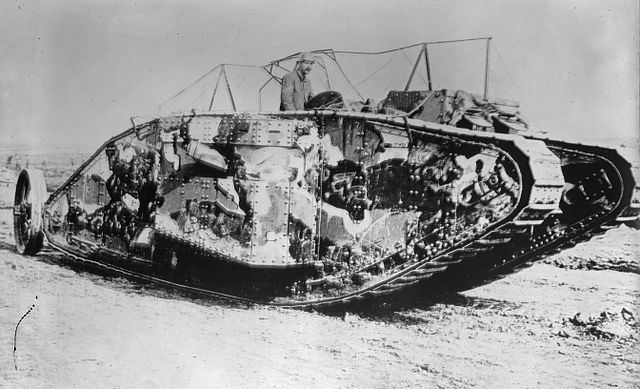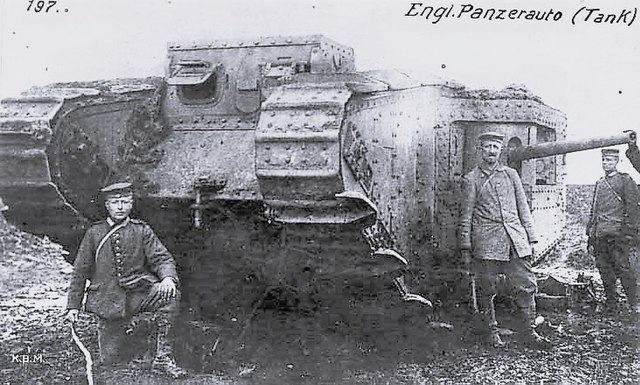British heavy tanks of the First World War
British heavy tanks were a series of related armoured fighting vehicles developed by the UK during the First World War. The Mark I was the world's first tank, a tracked, armed, and armoured vehicle, to enter combat. The name "tank" was initially a code name to maintain secrecy and disguise its true purpose. The tank was developed in 1915 to break the stalemate of trench warfare. It could survive the machine gun and small-arms fire in "no man's land", travel over difficult terrain, crush barbed wire, and cross trenches to assault fortified enemy positions with powerful armament. Tanks also carried supplies and troops.
A British Mark I "male" tank near Thiepval on 25 September 1916, fitted with wire mesh to deflect grenades and the initial steering tail, shown raised. Photograph by Ernest Brooks
The Mark IV tank Lodestar III at the Belgian Royal Museum of the Army, Brussels (2005). This tank retains its original paint.
British Mark I tank with the Solomon camouflage scheme
Mark II; tank no. 799 captured near Arras on 11 April 1917
Armoured fighting vehicle
An armoured fighting vehicle or armored fighting vehicle (AFV) is an armed combat vehicle protected by armour, generally combining operational mobility with offensive and defensive capabilities. AFVs can be wheeled or tracked. Examples of AFVs are tanks, armoured cars, assault guns, self-propelled artilleries, infantry fighting vehicles (IFV), and armoured personnel carriers (APC).
WW1 Mark V tank, in The Tank Museum
Battle of Zama by Henri-Paul Motte, 1890
Model of a vehicle sketched by Leonardo da Vinci
Modern reconstruction of Hussite war wagon








